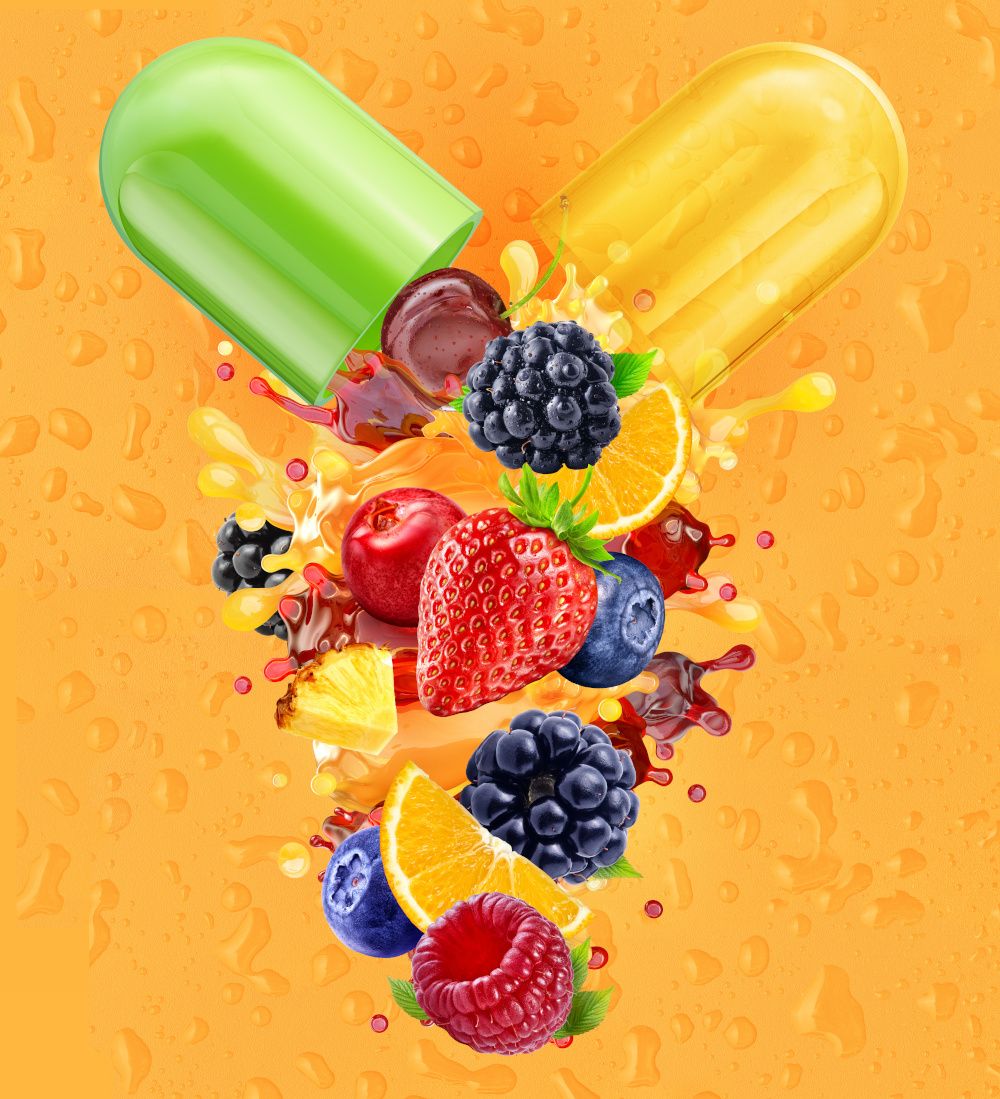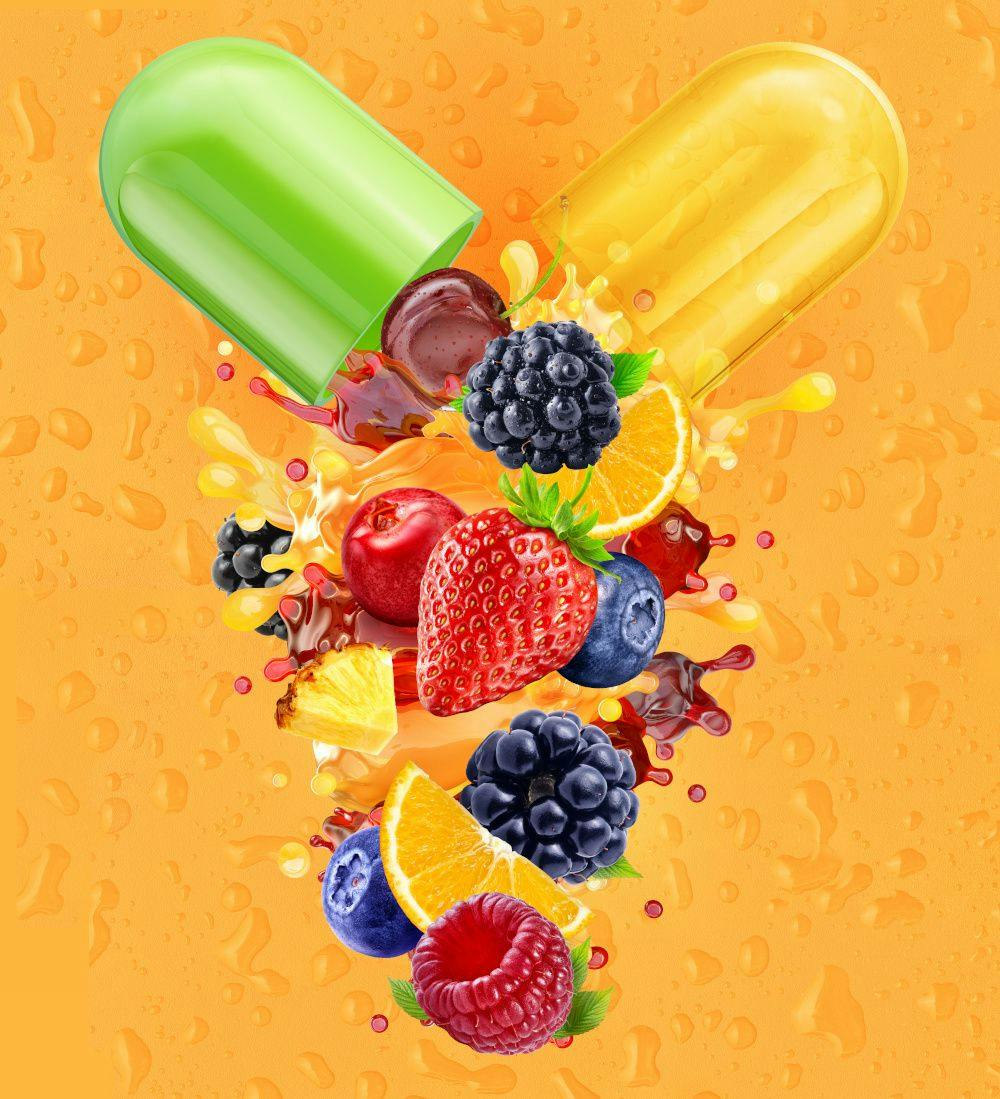How do you modernize the multivitamin?
Leading supplement brands explain how today’s multivitamins meet modern needs.
© Corona Borealis / Stock.adobe.com

In a supplement landscape abloom with products pinpointing specific conditions, leveraging AI for personalization, or even delivering the goods via platforms as novel as stick packs and “super coffees,” how relevant can a run-of-the-mill multivitamin be?
The answer, it might appear, is not very.
And that would be a real problem for industry if “run of the mill” captured the essence of the modern multinutrient supplement. But because savvy brands are evolving their multis in concert with evolving technologies, trends, and nutrition science, the multivitamins on shelves today give run-of-the-mill a run for its money.
Still the One
Evidence of the multivitamin’s staying power is everywhere. One need look no further than the fact that despite near-exponential diversification within the VMS space, multivitamins still make up its largest category, notes Francis Lau, PhD, FACN, director of scientific affairs at Olly. “And that,” he says, “in itself demonstrates strength.”
Lau attributes that strength to “the breadth of multivitamin options available”—among other factors—and points out that “regardless of age, gender, or format preference, there’s a multivitamin out there that can be the foundation of a vitamin regimen.”
And don’t discount the power of the pandemic in boosting multis’ profile, adds Susan Mitmesser, PhD, vice president of science and technology at Pharmavite LLC. But while she acknowledges that the spread of COVID-19 undoubtedly focused attention on multivitamins’ preventive potential, she doesn’t think it tells the whole story.
“Multivitamins are absolutely still an important part of consumers’ health-and-wellness regimens,” she explains, “and while we can attribute this partially to the self-care and wellness booms of COVID-19, we can also credit multivitamins’ ability to ensure adequate micronutrient status—and we know for a fact that adequate micronutrient status leads to better long-term and short-term health outcomes.”
Conditional Love
Supplement users know this, too, and as their appreciation for the interplay between nutrition and health grows, so does their interest in fine-tuning their supplementation strategies to optimize desired outcomes or attenuate pressing concerns.
That interest has begat a golden age of condition-specific supplements, with formulations aimed at increasingly precise wellness goals like improved sports and cognitive performance, or cellular health, women’s health, digestive support, and more.
Consumers are buying in with zeal—which is a plus for industry—but the rise of condition-specific supplements raises questions about where broad-based multivitamins fit into an evermore-segmented supplement shelf.
“With the heightened focus on health and wellness among VMS consumers, it makes sense that condition-specific supplements have become popular,” observes Jeff Wong, vice president, marketing, at SmartyPants Vitamins. “The more individuals learn about their personal health needs, the more they want to cultivate more tailored supplement regimens.”
“But condition-specific formulations,” he continues, “are just that: condition-specific. While these can complement multis, they may not contain all the nutrients that multis do to help with whole-body health.”
One-Stop Supplement
Rachel Jones, MS, RDN, senior vice president and chief product innovation and science officer at GNC, agrees.
“Multivitamins have been a central part of wellness routines for years because of their efficacy and ability to help consumers set a baseline—providing an array of vitamins and minerals that fill nutrient gaps that may be present in an everyday diet.”
And while avid supplement users may not consider “baseline” enough, “That doesn’t negate the positive impact a traditional multi can have on overall wellness,” she insists.
Moreover, argues Wong, consumers shouldn’t have to build an elaborate supplement stack just to ground themselves in the basics. Rather, “We believe they should be able to opt for a quality daily multivitamin, and then opt for a condition-specific formulation on an as-needed basis.”
And to the extent that specific conditions like poor energy, high stress, or fractured sleep are products of nutrient gaps—as they often are—“Filling those gaps with a multivitamin can typically support common condition-specific needs, too,” argues Erin Barrett, PhD, director of product innovation and scientific affairs at Shaklee.
Finally, in an inflationary era, the multivitamin’s knack for multitasking is invaluable.
As Lau puts it, “When the economy takes a downturn, consumers often cut back on things that are ‘nice to have.’ But multis aren’t typically viewed as nice-to-haves, and many consider them essential. Their advantage in this environment is that they really are a staple of good health support.”
Jones even calls the multivitamin “one wellness product that budget-conscious consumers should be willing to purchase. It’s a foundational first step nearly everyone can benefit from, and it’s typically more economical than buying solutions separately and layering them together.”
And, Not Or
Best of all, this multi-versus-specific debate needn’t be a debate at all: Consumers can have the best of both supplementation strategies.
“Often we’re looking at an ‘and’ instead of an ‘or’ when comparing condition-specific products to multivitamins,” Mitmesser says. “Multivitamins are easy, low entry points into foundational health and wellness, but for those with specific health concerns, condition-specific products packing a bigger punch can complement multivitamins.”
She considers both insurance policies, concluding that, “Effectively, consumers can’t go wrong using either multivitamins alone or stacking them alongside condition-specific products. What’s important is that they account for their goals and lifestyle considerations.”
Food First
And, it’s worth noting, for their diets.
“I want to add to the conversation that food is always first,” says Erin Stokes, medical director at MegaFood. “As a naturopathic doctor and mom, I believe in healthy food’s power to deliver essential vitamins and minerals. But there are real gaps in people’s diets, and we need a little help covering them.”
So when she discusses multivitamins, “I often invite people—myself included—to think about everything we’ve eaten in the last 24 hours,” she says. “This simple exercise generally reveals that while most of us are doing our best, our diets are definitely not perfect.”
And even if they were, she continues, “There’s clear evidence for the declining nutrient composition of food.” A study published in the Journal of the American College of Nutrition measured changes in the nutrient composition of 43 garden crops from 1950 to 1999 and found that, on the whole, the foods analyzed displayed declines in protein, calcium, potassium, iron, riboflavin, and ascorbic acid.1
No wonder that “despite our best efforts to eat healthily,” Barrett says, “up to 90% of us don’t get the key nutrients we need from food.” And with more of us adopting restrictive “lifestyle diets”—think keto, paleo, gluten-free, intermittent fasting, et al.—nutritional equilibrium can tilt even further out of whack.
Thus, says Barrett, there’s still plenty of need for multivitamins that “help bring balance back to people’s diets by filling nutrition gaps.”
Delightful Delivery
It helps if they can do so conveniently. As Wong points out, today’s multi users are “busy people who want the option best-suited to their needs without having to spend too much time, or money, investing in an entire cabinet’s worth of supplements. Fundamentally, they’re seeking the same thing they always have: the best option to help support their health and that of their families.”
But “best” means different things to different bodies, and, as Jones points out, “Regardless of where the consumer is on their wellness journey, they have higher expectations for the multivitamin. They want cleaner ingredients and expect claims such as vegan, plant-based, whole-food-sourced, gluten-free, and organic.”
They also expect an enjoyable experience. “It’s important to have solutions for people who prefer alternative delivery forms or struggle to swallow tablets or capsules,” Barrett emphasizes, noting that 40% of the general population counts themselves as part of the latter.
To answer these needs, Shaklee developed a multivitamin drink mix with 17 essential vitamins and minerals, most of which appear at 100% or more of their daily requirement. The company also designed a comprehensive prenatal supplement system comprising a multivitamin drink, “a tiny tablet to deliver strong-tasting minerals,” Barrett says, and a “gelly”—think “squishable gummy”—packed with omega-3s. “No more ‘horse pills’ that make compliance hard for the pregnant mama-to-be and her sensitive tummy,” she declares.
Wong notes that SmartyPants was among the first brands to offer gummy multivitamins and that the company is now zeroing in on the growing need for sugar-free gummy multivitamins with its late-March retail launch of a new line of sugar-free gummy multis in kids’, women’s, and prenatal formulations.
The products contain neither sugar nor sugar alcohols, relying instead on monk fruit and allulose for sweetness. With more than half of consumers actively trying to limit or avoid sugar, Wong reports, “This is an important white space that will have a significant long-term impact in the industry.”
Lau adds that Olly strives to deliver nutrients “in formats that are fun, easy to take, and so delightful that consumers actually look forward to taking them and can stick to the habit over time.” And for the traditionalists in their fan base, old-school platforms like softgels remain in the lineup.
Getting Personal
“We’re keeping up with the ever-changing market by exploring new formats and ingredients, and when it comes to ingredients we’re keeping our eye on nootropics, adaptogens, and mushrooms,” Lau continues.
The company also sneaks some plays from the condition-specific space by formulating not just the essentials into their multis but “nutrients that address top health benefits for the intended end user,” too, Lau explains. They introduce this element of personalization by building a multi base that’s suited to everyone—men, women, teens, kids, prenatal, and gender-neutral users—and then adding nutrient “boosts” atop it as appropriate. So their women’s multi includes biotin for hair, skin, and nail support, Lau explains, while their men’s multi boasts B vitamins for cellular energy.
And as Melina Baxter, chief marketing officer at Shaklee, notes, “We understand that a multi isn’t a one-size-fits-all product, and that everyone’s unique.” In other words, “You can have two 30-year-old women who have very different nutrition needs, and a one-size-fits-all approach doesn’t work for them.”
Shaklee’s answer is Meology, which Baxter describes as “a personalized nutrition system that targets what you and only you need to thrive.”
Launched in 2020, the system takes users through a short diet and lifestyle questionnaire and then runs it through a back-end algorithm that cooks up “an essential program of core nutrients—a 21st-century multi—specifically for you,” Barrett explains. So while most contemporary multivitamins supply all the essential vitamins and minerals at levels near 100% of their daily values, she says, this system tailors both nutrient choice and level to a user’s specific needs as per age, gender, health status, food preferences, activity levels, and more.
Standing on Science
It’s a tech-forward development that hints at a nutritional future we may already be living in.
Then again, technology—and science—have always underpinned responsible supplement development. For example, says Jones, “At GNC, research informs everything we do.” The company even conducted a clinical study on the multivitamin blend in the GNC Mega Men and GNC Women’s brands and found that participants improved their levels of key B vitamins and oxidative-defense nutrients compared to those receiving the placebo, she says, adding that their formulations “worked better than a basic multi at increasing levels of several nutrients.”
Meanwhile, Wong claims that SmartyPants always consults the latest science to determine whether or not to include hot new nutrients or benefits in their formulations. “‘Science-backed’ is the key point,” he says. “We’re looking for clear evidence, never reacting to trends.”
Their in-house nutrition-science team and scientific advisory board use NHANES data to understand nutrient gaps in demographics “so that we can formulate to fill them,” he explains. They also update and revise formulations to reflect the latest science and “ensure we’re giving consumers the most efficacious products we can.” Thus their products often contain not just the essentials but also nutrients “not commonly found in other multivitamins, like omega-3s, or vitamin B12 as methylcobalamin,” he says. “This all-in-one approach helps to effectively address a variety of deficiencies in one daily supplement serving.”
And that matters. “With 92% of American adults experiencing some form of nutrient deficiency,” Wong concludes, “the most important thing we can do is offer an accessible way for them to enter the category and start addressing those gaps.” If consumers graduate to condition-specific supplementation, great; if not, that’s great, too. “Thankfully,” he says, “they don’t have to choose.”
Reference
- Davis, D.R.; Epp, M.D.; Riordan, H.D. Changes in USDA Food Composition Data for 43 Garden Crops, 1950 to 1999. J Am Coll Nutr. 2004, 23 (6), 669-682. DOI: 10.1080/07315724.2004.10719409

HHS announces restructuring plans to consolidate divisions and downsize workforce
Published: March 27th 2025 | Updated: March 27th 2025According to the announcement, the restructuring will save taxpayers $1.8 billion per year by reducing the workforce by 10,000 full-time employees and consolidating the department’s 28 divisions into 15 new divisions.



















